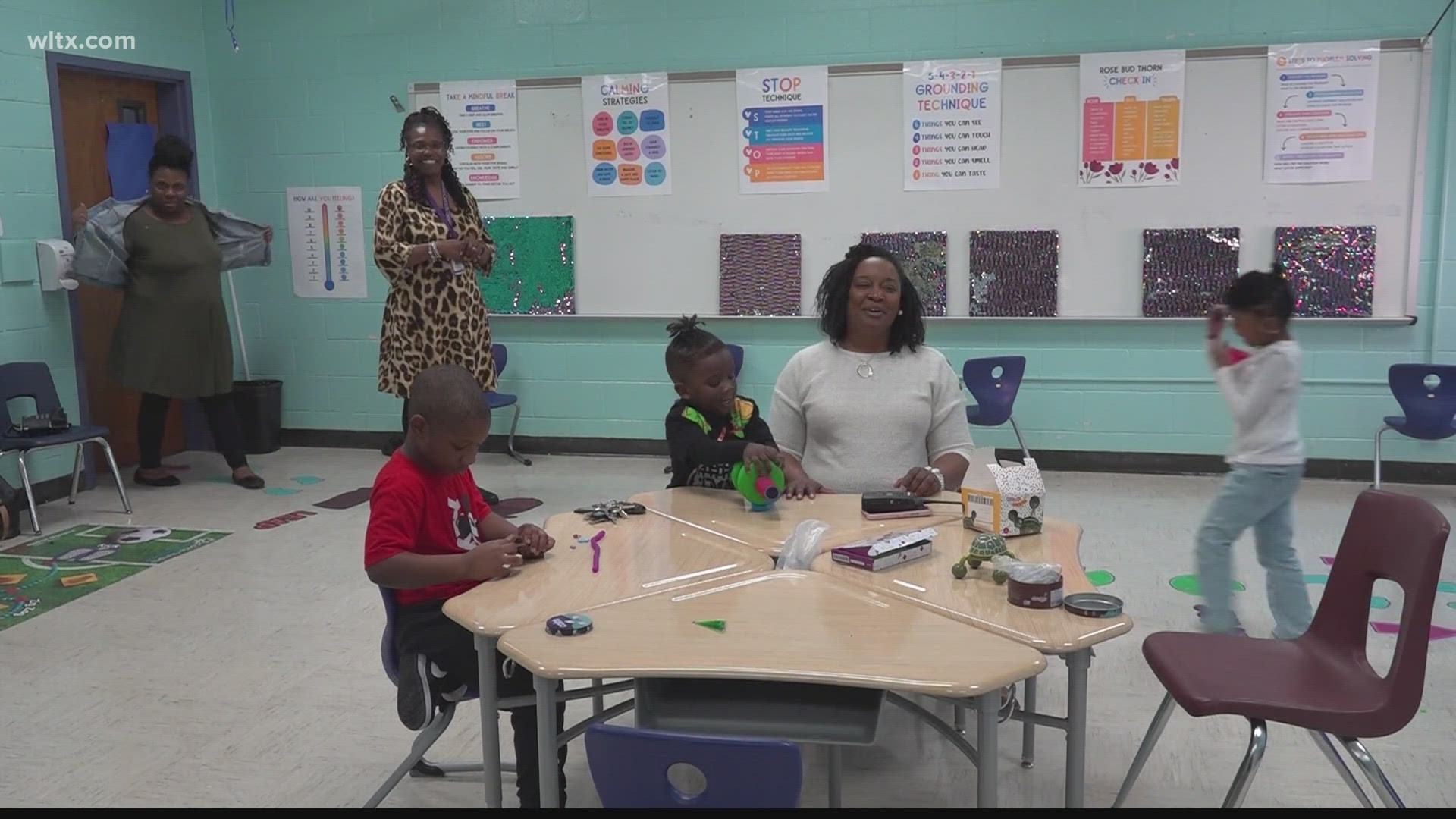SUMTER, S.C. — Elementary students in Sumter are learning calming strategies and have fewer distractions in the classroom thanks to a new space. Lemira Elementary School has been working to create a sensory room modeled after a concept it saw in Columbia.
“They can just have that little calm, little peaceful moment they need to calm down,” Lemira teacher Keiya Williams explained about the benefit of the school’s new sensory room.
“Sometimes being around the other kids builds it up. They see one do it, so it’s building up. building up, building up,” Williams said about when her students get overwhelmed. “Sometimes when they calm down in here, we can give them work. Continue their work that they was doing in the classroom, we can bring it in here. When we see them calm down, we can sit them at the table and the work just flows. Believe it or not, they be doing it, they be doing it, they be doing it.”
Principal Stephanie Gregg saw the idea at a school in Columbia, Caughman Road Elementary, and decided to bring it to Sumter.
“I first saw it, I saw it be used for behavior de-escalation and I was impressed by it because I saw children go in that were pretty much heightened with their emotions, and they were able to calm down because of the strategies and being able to just use those sensory objects to kind of bring them back down,” Gregg remembered.
Gregg used Title I funds to create the room with tactile toys and calming strategies posted on the wall. Gregg says the idea is twofold: first, it’s used as a behavior de-escalation room.
“It gives them a sense of how to deal with emotions, so that when they’re faced with different scenarios or situations, they have these things in place to be able to bring them back,” Gregg detailed. “Because by them being able to now be aware of their emotions and how to properly handle those emotions, they can now go back into the classroom. And whenever they get to that point where they feel like they’re working themselves up, they have strategies to bring them back to being able to participate in the classroom.”
Teacher Anastauzia Wells says having this separate room helps minimize distractions for other students.
“Sometimes some kids, they might piggyback off other kids with certain behaviors and stuff,” Wells shared.
The second purpose of the room is for students who have different developmental needs, like autism. Wells’ daughter is a part of the school’s Developmentally Delayed Kids (DDK) program and she tells me having this space is helpful.
“I think it’s another redirection type thing with dealing with behaviors. Instead of saying, ‘Oh let’s maybe suspend this child or send them home,’ this can almost be like a different method of redirection and getting the behaviors to calm down in a different way,” Wells said. “We have less behaviors and less people getting sent home I would say, so it’s more of a different route.”
“They’re loving it and we’re loving it because we see how they’re working with one another, interacting with one another, so it’s beautiful,” Williams added.
Sensory play helps children interact with the world around them and has various benefits, according to Action for Children. The organization says encouraging activities that involve the senses starting at a young age can help with developing fine motor skills, supporting language development and emotional regulation, among other developments.

